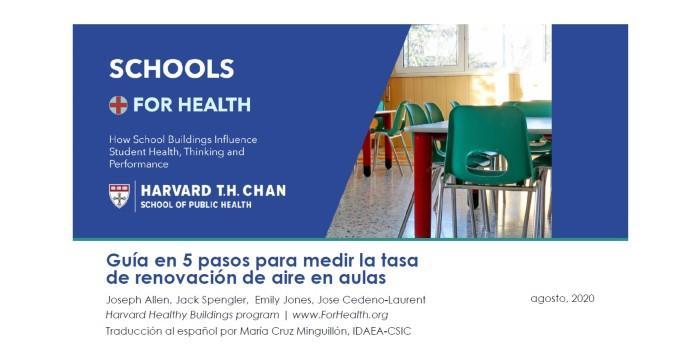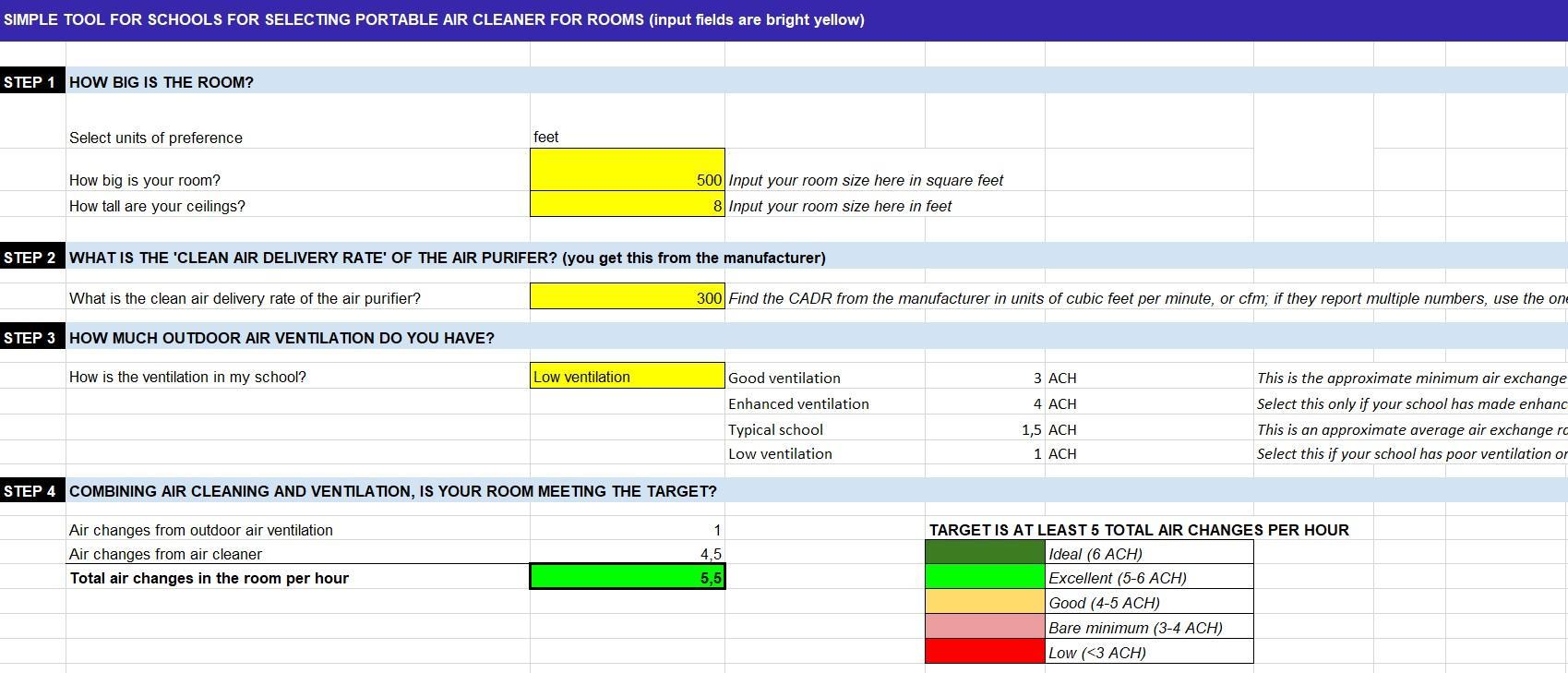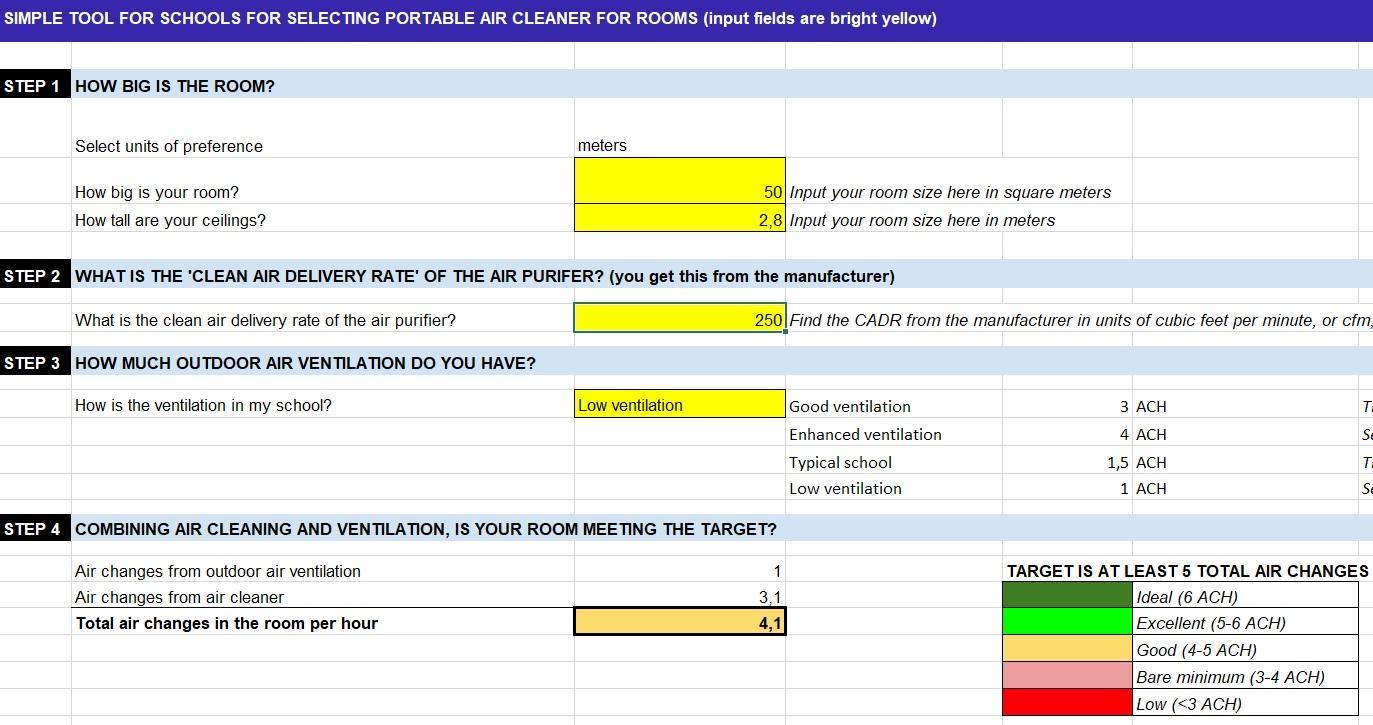 International. In August of this year, the Schools for Health Foundation for the improvement of the health of children and young people in the school environment (https://schools.forhealth.org/) published a guide that told us how to know if the ventilation rate of the classrooms was adequate for the correct start of the school year in the current situation of the COVID-19 pandemic.
International. In August of this year, the Schools for Health Foundation for the improvement of the health of children and young people in the school environment (https://schools.forhealth.org/) published a guide that told us how to know if the ventilation rate of the classrooms was adequate for the correct start of the school year in the current situation of the COVID-19 pandemic.
The study indicates a method to determine the air renewal capacity of ventilation systems in schools and whether the flow rate moved by them was sufficient or not.
The impeccable technical treatment of the guide foresaw the possibility of not being able to ventilate correctly and opened the door, much more than correct and advisable, to fill this gap with air purification systems based on HEPA filter. The flow not provided by outside air was compensated by that same flow of purified air. To do this, he linked us to a calculator for selecting equipment based on their technical characteristics.
This link, https://tinyurl.com/portableaircleanertool, takes us to an Excel sheet where just entering the dimensions of the classroom gave us the characteristic of the necessary purifier. This characteristic was based on the CADR (filtered air flow) that the equipment had to meet.

The fact of only considering the volume of the room leaving aside the occupation is not in accordance with Spanish regulations, but that it was based on ASHRAE 62.1 standards led me to investigate this, at first glance, contradiction.
Indeed, the calculations were accurate, the application of them correct, but not applicable to the reality we face in Spanish schools.
If we analyze how the calculations are applied, we must go to the "README" sheet, where it explains in detail the data taken into account for it.

What we find in it is that the ASHRAE method for ventilation is applied as:

• 5 l/s person
• 0.6 l/s m²
This approach would be correct under ASHRAE standards but would be outside the Norm for Spain, for:
• RITE ventilates people, not surfaces.
• The RITE flows are two, schools and classrooms in general 45 m³ / h person and nurseries 72 m³ / h person.
The truth is that this aspect could be ignored if the final result were practical, but it is not. The fundamental parameter of the calculation is based on the capacity, or rather, capacity density, which the calculator took as the basis of calculation. This value was 25 people in a room of 1,000 ft² (92 m²), unthinkable in Spain where in 40 m² we comfortably fit those 25 people.
The misuse of this calculator leads to undersizing errors of 70% to 100% for schools and from 112% to 150% for nurseries, not negligible, but above all to the error of feeling safe for having done well under much more than endorsed standards.
The fact is that for a classroom of 50m² it indicates us as good, with "typical natural ventilation" of 1.5 renovations / hour and with an occupation of 13 people, a purified contribution of 3.1 renovations / hour.

For our occupations, 25 people in 50m², the rates of our ventilation indicate between 7-8 renewals / hour, well said, 1,125 m³ / h filtered by prefilter F6 and filter F8, to which if we subtract that "natural ventilation" of 1.5 renewal / hour, more than doubtful, it indicates a purified air rate of 6.5 renewals / hour. Data very far from what is obtained by the Calculator.
As stated above, this error is multiplied in nurseries.
As a final summary we must indicate that:
• Although the calculator is very correct under the ASHARAE Standard, its direct application in Spain is unfeasible and dangerous.
• Calculating air renewal flows without knowing the capacity is very risky.
With the studies carried out by KEYTER's R&D&I teams, AirSanit, KEYTER's Air Treatment and Purification Unit, has been developed, which has already obtained the Anti-COVID Certification from the National Institute of Aerospace Techniques of Spain. From KEYTER we continue working every day to put at the service of the fight against COVID-19 all our experience and knowledge.
* José Arboledas, Head of Special Projects and Training at KEYTER.














